How to Start a Solar Farm – The Ultimate Guide (+ 4 Common Myths!)
“The next big farming investment since Bitcoin or Ethereum!” Sounds like a quote from a random Quora user on the lucrative business of solar farming.
But is this true in the real world, outside the constraints of forums and social media? Is solar farming so profitable and easily manageable, requiring little to no expertise in the PV (photovoltaic) industry?
This lucrative, green, sustainable business piqued my interest just like it did yours, so I put on my Sherlock Holmes hat and started digging.
And what I found out could easily blow your mind!
But before diving into the logistics and finances of starting and running a successful solar farm, let’s get down to the basics first.
The Basics of Solar Farming: 4 Myths & Facts
Solar farms have become a trending eco-friendly energy niche in the past five years, and for a good reason.
Made out of hundreds, even thousands of individual solar panels, each with a specific power rating, solar farms provide clean and renewable energy without harming the environment or depleting natural resources. Plus, if you want to squeeze more juice out of the sun, scaling up is easy as 1, 2, 3. (Which is precisely why they attract so many energy investors).
Let’s crunch the solar numbers.
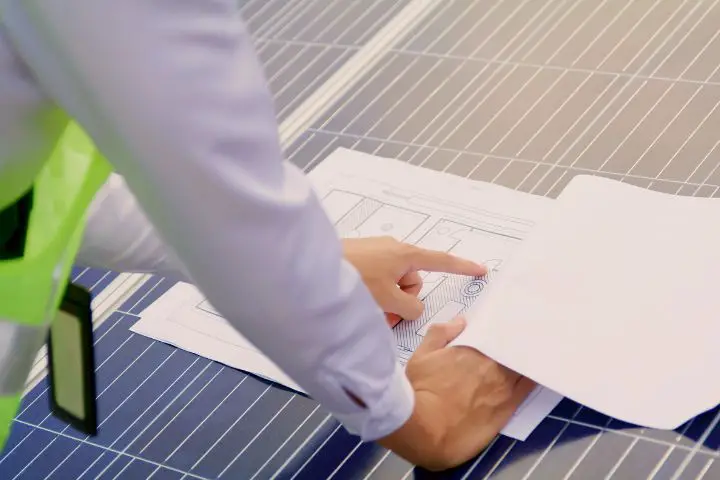
A solar farm composed of 10,000 solar panels (which is roughly 25 acres, the most common size for smaller commercial solar farms) should generate between 3~4 megawatts (MW). To get a better feel of the numbers, it means that a 1 MW solar farm powers around 200 homes, so 3~4 MW potentially powers 600~800 homes at peak output.
Almost the size of an entire neighborhood!
But even though they provide a plethora of benefits and energy sustainability, there are several myths that most people (wrongfully) associate with them.
They are:
Myth #1: Solar Farm = Solar Park
Most people trying to dip their toes into this solar, eco-friendly, and more-lucrative-than-Bitcoin industry will arrive at the first roadblock – the difference between solar parks and farms.
It’s what’s causing all the confusion!
Namely, the main difference between a solar farm and a park is that solar farms are solar installations as big as the eye can see (sometimes literally!). Their main purpose is to provide utility-scale electricity to power grids. They start from 3 to 100 MW.
Rural or sub-rural areas with a lot of “unusable” land are the best option for developing these sun colonies.
Solar parks, on the other hand, are the mini-me version of solar farms. They are more localized installations, usually located in the city, around picnic areas or city and amusement parks. Their power output isn’t as gargantuan as with solar farms, but rather tiny (<3 MW).
What I love about solar parks is their dual purpose – providing local electricity and acting as an educational or recreational area for the community. Boosting the eco-movement at its core!
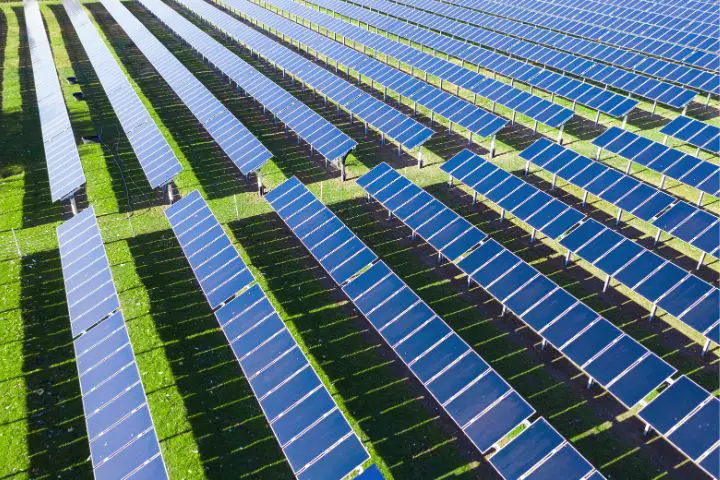
Myth #2: Solar Farms Decrease Property Values
Nay-sayers will be nay-sayers, but let’s prove them wrong!
Research done by the Lawrence Berkeley National Laboratory on the effects of solar farms on property value shows that owning property near a solar farm might even boost your home’s value.
Thanks to the trend of environmentally conscious real estate development, living in a neighborhood committed to renewable energy (as in solar farms) increases your home appreciation every year.
“Honey, let’s move to California, Connecticut, or Massachusetts. I heard the eco-real estate there is booming!”
Myth #3: Solar Farms Are Silent
You’ve probably heard of noise pollution around solar farms.
What got me scratching my head and will do the same with you is: “How on earth can solar panels create noise?”
They are solar panels – You mount them, connect them with the funny-looking main box (inverter) and keep them clean. Where’s the noise pollution in that?
That’s where you’re wrong!
The thing is, solar farms need powerful inverters to operate. It’s those boxes that convert the output into energy that can actually be processed in our households’ electrical systems. Because of their size, and the amount of power electronics inside, they are the main source of solar farm noise pollution.
But let’s leave a deep dive into power electronics for some other time. All you need to know right now is that because of the DC-AC current switching, large-scale solar farms need noise-proofing.
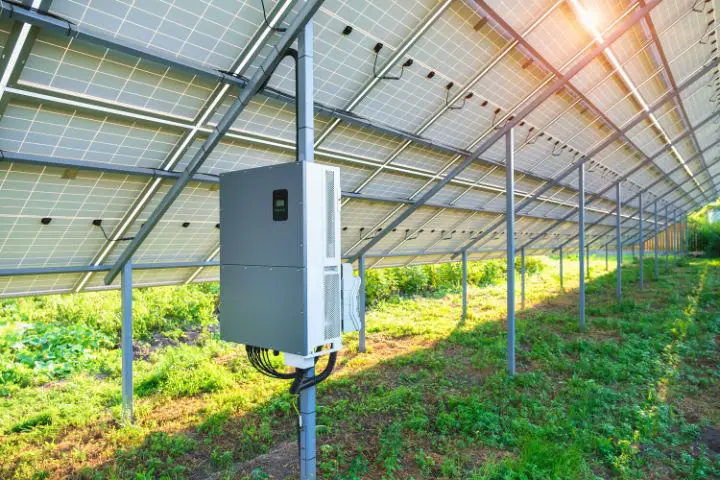
Myth #4: Solar Farms are a Threat to Wildlife
“It’s a blight on the landscape!” – The (in)famous 2014 verdict by the United Kingdom’s ex-prime minister, then environment secretary Liz Truss, has been echoing through the country’s government policies ever since. But is there any real substance to these charges?
Sure, solar farms don’t look like the green garden of Eden. But they aren’t even made for that purpose.
If well-constructed and appropriately managed, solar farms actually foster biodiversity and become thriving eco-sanctuaries for local wildlife! Because of their natural shade, they are also the famous “pollinator-friendly” zone creators, populating the area with native plants, which support bees, butterflies, and other pollinating insects.
Thanks to their enormous scale, the harmony between Mother Nature and modern tech is, if not established, at least not further jeopardized.
Must-Know Types of Solar Farms Before You Start
Now that we finished playing mythbusters with solar farms, let’s dive into the types you must know before starting your very own solar farm.
Before you start a solar farm, you’ll be at two eco-crossroads: PV (Photovoltaic) and CSP (Concentrated Solar Power) farms.
Each of them has its perks and challenges, but which one is better and why is the million-dollar question I want to answer here!
Photovoltaic solar farms are your usual run-of-the-mill solar farms. They are the “Das Auto” of the solar industry. With PV farms, it’s the numbers game – the more solar panels you have in your array, the more MW your farm will produce.
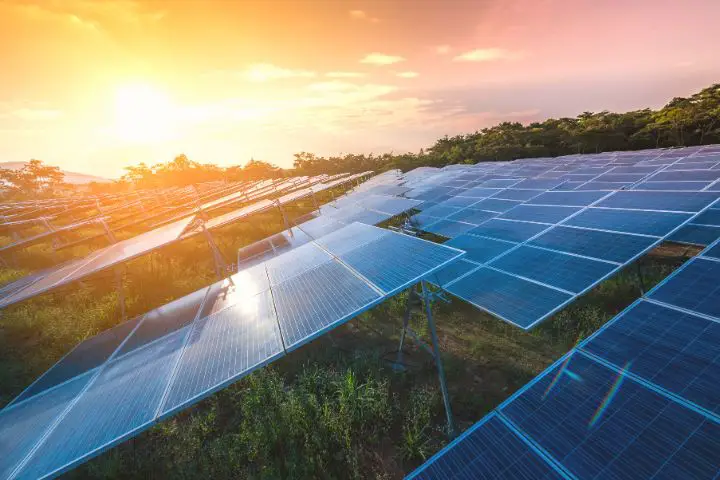
It’s as simple as that!
CSP solar farms play a completely different game. Instead of absorbing the light, they reflect it onto a single point (sun tower) that heats up to steel-melting temperatures. Much like you’d do when you want to concentrate heat using a magnifying glass! That enormous temperature heats the fluid, producing steam and powering steam generators for electricity.
Think of them as solar steam machines of the 21st century. (Even though not all of them use water that turns into steam. They heat up different kinds of fluids such as oil, hydrogen or molten.)
But which one should you choose?
- PV farms are great when you want adaptability and scalability. The sweet spot for PV farms is a couple of dozen MW.
- CSP farms are better at storing energy and don’t stop generating electricity when the sun isn’t shining. CSPs are most efficient when producing hundreds and even thousands of MW!
- PV farms tend to have low operational costs and are easy to maintain, which is why they attract so many beginner eco-investors.
- Besides electricity production, CSPs are also used for desalination or process heat application. It’s the versatility feature that senior eco-investors love and that brings more bang for the buck.
How to Achieve the Full Solar Farming Potential
Location, location, location. Solar farms are like real estate, everything boils down to location.
The truth is, the efficiency of your future solar farm solely depends on your location and the amount of sun-hours it has. The more hours, the merrier. Typically desert areas have the most solar irradiance (a fancy term for the power your area gets from the Sun).
There are plenty of sunshine hour calculators on the web, but the one I enjoy using is Keiran’s sunshine hour calculator based on your location (or latitude and longitude data if you’re more of a NatGeo fan).
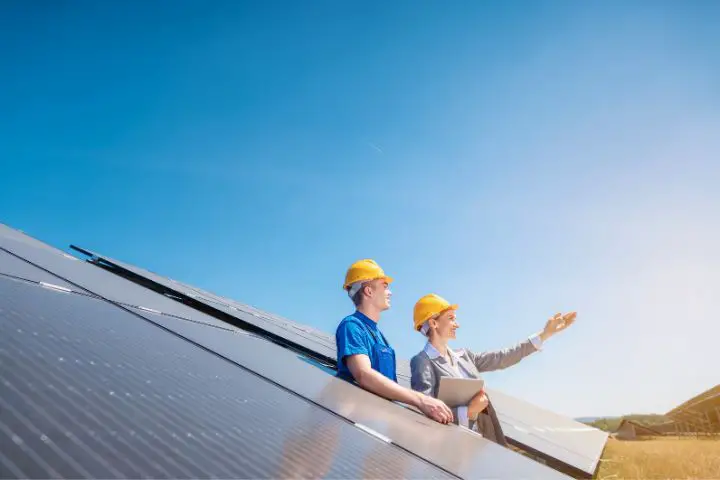
After you’ve crunched the hour numbers, it’s sizing time!
The good rule of thumb: Most calculations are done in MW. So for 1 MW of electricity, you’ll need around 4 to 5 acres of land.
So, got a 5 MW project in mind? You’ll need roughly 20 to 25 acres to make your solar dreams come true.
Another factor to take into account is the angle of your solar farm. I know, it feels like solving the Pythagorean theorem, but all these factors are keys to successfully running your solar farm. On the northern hemisphere, panels must face the south and vice versa on the southern.
The angle of your solar array (one row of solar panels) is directly connected to the latitude of the place. For the US, it’s usually between 30~45 degrees. It’s the sweet spot of having an efficient solar panel orientation.
Bonus Tip #1
Where most people jump overboard with solar farms is thinking they could produce dozens of MW on a couple of acres of land. Even though technology has evolved so much in recent years, solar panels have power-to-size limitations. So, always factor in your available land size and be realistic with MW projections.
5 Money Factors to Consider When Starting
The boogeyman in the closet: Most people get discouraged about starting a solar farm the moment they see the initial investment amount. But solar farms are a long-term investment, not a crypto-get-rich-quick gig.
Let’s break it down so the financial calculations don’t turn into a heart-attack-like gasp:
1. Initial Price Tag
Starting a solar farm ranges between $2,000 to $5,000 per installed kilowatt. Speaking in megawatts (that’s 1,000 kilowatts), it’s a whopping 1~3 million dollars! It’s a big number, but in the long run, it pays off tenfold.

2. Other Factors
Land, equipment, installation, and permits all contribute to a solar farm’s price tag. Land depends on the location. The equipment depends on the type and power output of your solar panels.
More power = a higher price tag.
Then, there’s the installation part. Now, if you’re like me, anything that involves a power drill and putting things together seems like a fun time. But putting together miles and miles of screws, holders, systems, and panels for a single person is a CHALLENGE!
3. Funding Your Solar Farm
The best about solar farms is – you don’t need to finance it all by yourself!
Some of the ways you can tackle this problem are:
- Federal grants and loans – The U.S. federal government, under the Department of Energy and the Department of Agriculture, has programs (REAP being just one of them) offering financial assistance for renewable energy projects.
- Solar crowding a.k.a community solar – There are two types of community solar projects: ownerships (think like stocks and shares) and subscriptions (think Netflix and Amazon Prime subscription). You can use either one of those community solar formats for developing a solar farm and building a real sustainable community.
- Clean Renewable Energy Bonds (CREBs) – In a nutshell, CREBs are tax credit bonds that provide the borrower with a federal tax credit instead of an interest payment. Translated to English, it is a method with which you allow public entities to finance your solar farm.
- Solar Power Purchase Agreements (PPAs) – It’s not a direct funding source, but under a PPA, you get a solar provider that installs and maintains solar panels. You then purchase the power generated at a pre-agreed price. It’s not a perfect funding method, but it makes a solar project more financially viable.
4. Calculating Your Solar ROI
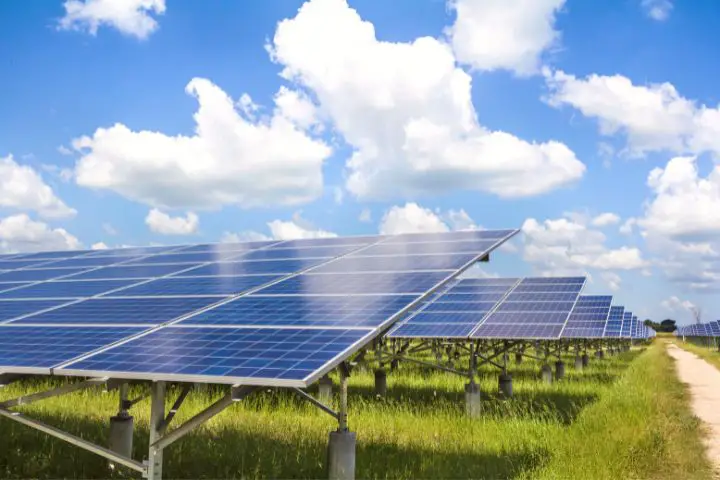
“When will I see a return on my investment?” is the first question people ask before starting a solar farm.
Saving you the pain of doing complex math, the average payback period is between 7 and 12 years with the lifespan of solar panels of 30 years. After that initial period, profits just keep piling up!
Buyer beware, though: Factors like government incentives, fluctuating operational costs, the selling price of electricity, and the amount of electricity generated affect your ROI.
5. Calculating the Long-Term Profitability of Your Solar Farm
“Look where the sun hits the desert at noon and put a solar farm there!”
The great thing about solar farms is their predictable revenue flow. With a lifespan of almost 30 years, they provide a steady stream of profitability, the same or if not better than some status-quo investment funds.
Bonus Tip #2
If you have an option, have a Power Purchase Agreement with a fixed rate. It performs as a shield from volatile energy price spikes.
Let’s Wrap Up
“Solar farms – a wise, sustainable investment with reliable returns.” – Warren Buffett probably, a couple of years from now.
What I love about solar farming is it isn’t just another green business opportunity. It’s the start of a new eco-revolution with something unique – A change for a better, sustainable future! It’s also the opportunity to preserve and even stimulate local wildlife while supplying your local community with clean, green electricity that’ll make nuclear power plants run to the hills.






